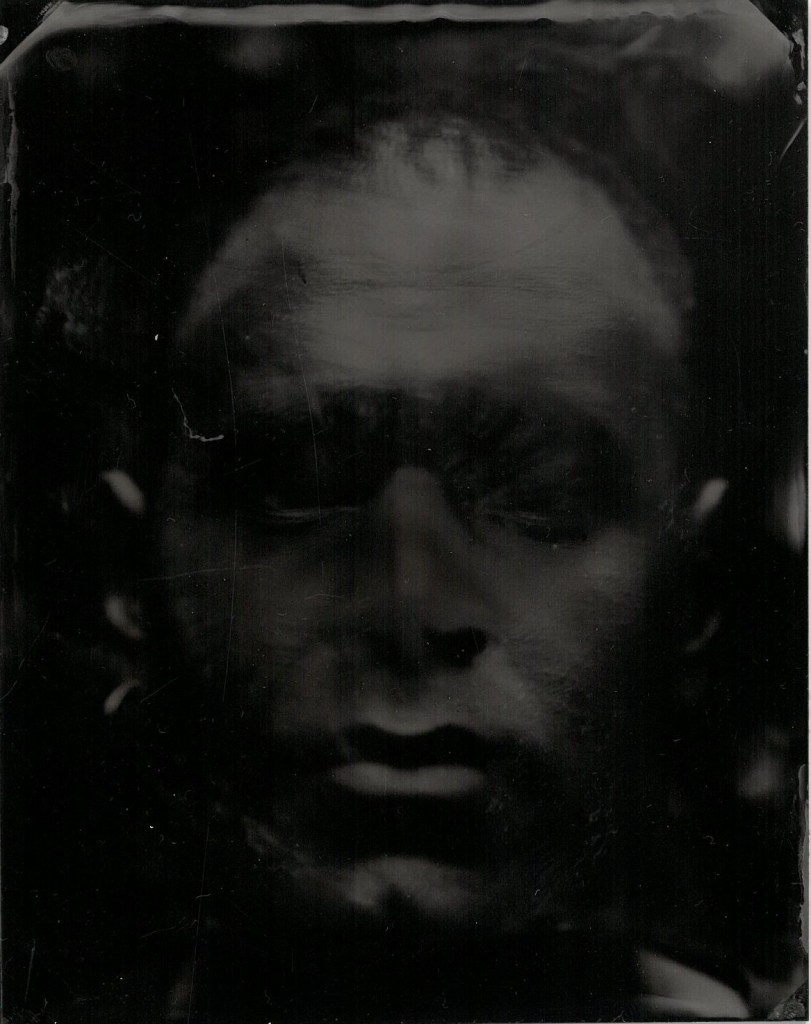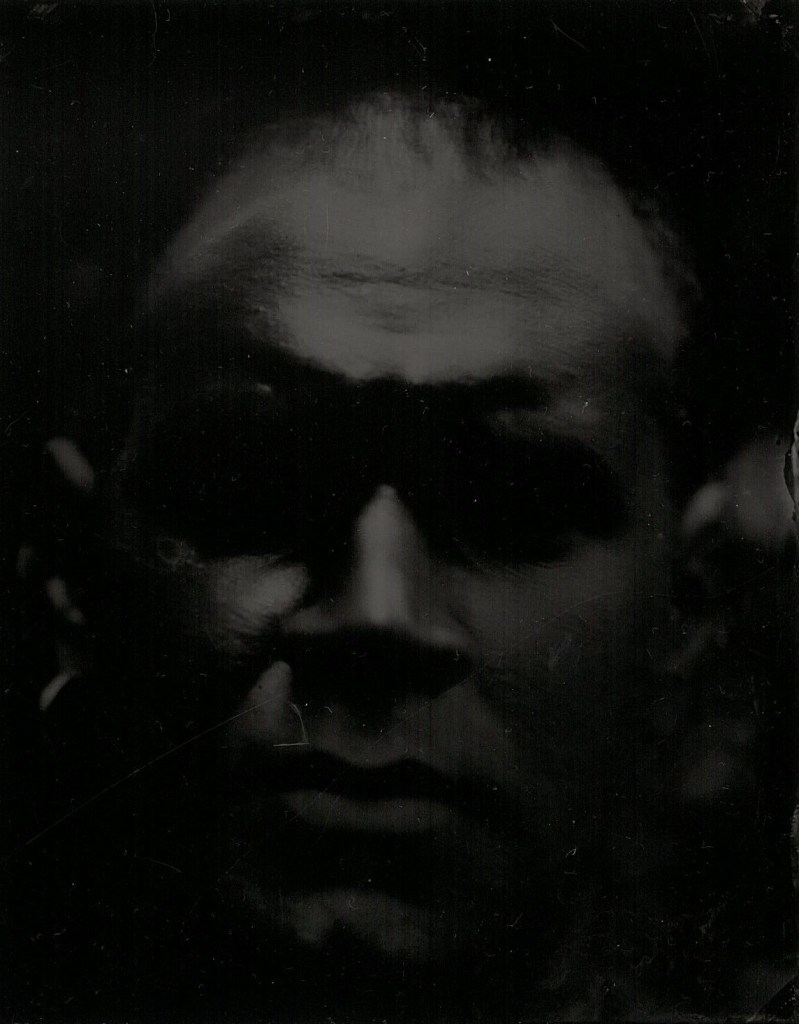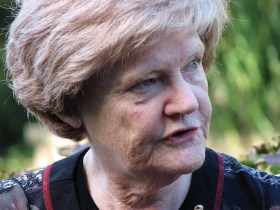Being a contemporary Indigenous artist in Australia is a tale of mission managers, gatekeepers and a relentless wet blanket that shrouds the flame of creativity. It is a tale of poisoned wells for drinking and continually being left out in the cold.
Like many Black people in this country, I am done with polite speech when it comes to our affairs. Artists are even better placed to cut through the festering politeness that keeps the conversation small and out of sight. We must remember that politeness doesn’t always mean respect. Politeness is a self-protective mechanism that creates a comfortable distance between people.
As a country following the referendum, polite speech, identity politics, corporate campaign slogans or trashy slandering won’t fix the mess that we’ve found ourselves in. There is no “moving on” for First Nations people and so it is imperative that we are so un-polite that we, even in silence, are heard clearly.
It’s important to remember that the proposal – the one the nation has rejected, the one we said “No” to – has a heart at its core. Perhaps now the Voice’s heart is broken.
There is a way to mend the broken heart, but we must think radically in order to shift the tide of this nation. We must be un-polite in our workings for change. Let’s get to the heart of it.
Jump to:
Superiority and “managing” minority groups.
Many of the problems facing First Nations’ artists in Australia is the tendency to keep our work small.
It often shows up in programmatic decisions that segregate First Nations artists into one day, or stage, or part of a festival. It’s usually a small stage or not the “main” day. Such was the case with the “First Nations first” day for a recent large-scale festival. When I went to see a friend perform, I was shocked to see that most of the festival stages were still being built and that most of the Black artists had been programmed on the day before the actual festival when no one was there.
In the arts sector, “First Nations” has been folded into thematic program management language, where “First Nations” has a set of thematic specifications that one must follow to be in line with the theme. It is an unspoken rule that the work usually must mention the first fleet, speak to how oppressed the artist is, or speak directly to the oppressor – or have a traditional dance.
When it comes to structural power in the arts sector, it is very evident who has the upper hand.
There are many gatekeepers in this maze of funding cycles, paperwork and ass-kissing, and they exist throughout the arts and cultural sector, into public services, private funding sectors, government at all levels (state, local, federal) and philanthropic foundations with ulterior motives. As we already know, the industry at all levels is mostly white and that the working class involvement in the arts is diminishing.
These entities that guard the funding are particularly adept at “managing” minority groups through their large and menacing institutions.
Read: Our voices run through our blood…
Jade Lillie, a highly respected arts leader in Australia, recently highlighted this point at a forum run by Yarra City Council, when she stated, ‘Communities and people who are participating in any kind of project are being patronised from the get-go about needing to be managed.’
She went on to remind the audience of the voices of minority communities who have to continually assert to the arts ecosystem that ‘we build our own worlds; we are capable of that. Imagine if we let ourselves live our wildest dreams’.
Within the First Nations communities, such micromanaging individuals or institutions are referred to as “mission managers”, making a direct link to the paternalistic protectorate mentality that echoes throughout our history.

I have come up against mission managers many times throughout my career. There are ways to navigate them, but the mentality of being “managed” is a hard one to shake. Previous mission managers have decided that my collaborators had to be entirely made up of First Nations people. ‘You must work with other Indigenous artists,’ they say proudly, as if they are doing the world a service by employing as many Black artists in one go as they can – bang for their buck.
But the projects I had pitched had people attached to them already, both Indigenous and non-Indigenous, and in the end I had to give up the opportunity to work with the non-Indigenous artists who had skills that were required to realise the vision.
Tell me this: as an artist, can you think of any other group that would find it acceptable to be told what ethnicity their collaborators have to be? Only the ones who are “managed” would know what this feels like. How is one supposed to feel sovereign when they are constantly being “managed”? How is one supposed to dream wildly as an artist must do?
As a sovereign artist, I should be able to work with whomever the work compels me too, not by their ethnicity and certainly not dictated to me by a mission manager. So many of these decisions are funnelled through their diversity and inclusion frameworks.
Diversity and inclusion is limiting artists
Diversity, Equity and Inclusion (or DEI) is everywhere and, in many ways, it is generating dialogue around persistent issues in the arts ecosystem. In other ways, it creates a weird psychological vortex where everyone is “triggered”, but no one knows what to do beyond creating indicators on a report filed away in the cloud.
DEI encourages us to delve into our innermost prejudices and yet falls short in actually creating a deep internal psychological shift. All I seem to hear is the parroting of the same ideas, promulgated over and over again. “White privilege, oppression, unconscious bias, be a good ally” – we’ve heard it all and yet is it sinking deeper? Clearly not deep enough.
Some of the most disrespectful people I have met have been DEI specialists, including one that wouldn’t give up on calling me “oppressed”, reminding me at every second of my “place in society” and that people like me “need help”. On this occasion, I respectfully raised my voice after four hours of being hounded about my thoughts on all things race and queer politics (I was at a bar and only wanted to talk about boys and have a laugh), told her to stop calling me oppressed and to let me enjoy my night – she cried.
Or another DEI specialist who kept pointing out that a gay manager was “straight-passing” and had privilege as a result. She thought it was perfectly acceptable to call out someone’s sexuality at work, something extremely personal, and used it against him to point out his inherent wrong by being straight-passing.
The truth is, most DEI professionals aren’t even close to being that “radical”. They nurse their reports and indicators, they run their yearly reconciliation events and they perform the same training over and over again, parroting the same language. I’ve seen it over and over again – they stay for a year or two at an organisation, they write a pretty report, everyone claps and they leave.
Also, DEI in the arts is always banging on about representation and that as many groups as possible must be represented at all times in all works. This is not always possible for art. In fact, we are already seeing the attempts to represent everybody all the time in film and television, and it waters down the overall result, creating an inauthentic form of storytelling that ultimately leads to tokenism.
Taika Waititi pointed this out in an address to The Hollywood Reporter earlier this year by saying that, ‘The word diversity is wrong … because it’s actually confusing everyone and what’s happening is we’re mistaking that for, “We have to include a person from every single race and every single background and part of the human experience in every show”… That’s not reality and it’s not authentic.’
His solution is to fund minority groups in a sovereign way to tell their stories regardless of how many groups are represented in that given work of art. In discussing Polynesian representation in film and TV, he went on to challenge the industry, ‘Don’t give us a white show runner to tell us the rules and tell us how to do things. Let us figure it out.’
Indicators, reports and investigations won’t even touch the sides of the problem. What is required now is deep psychological, spiritual work to clean out the wound.
In my mind I’m trying to think of a better group to perform this action …. hmm … who could it be? The artists, of course! We are primed to delve into the waters of our shared humanity and yet we are stuck in reports.
But it can’t be done in a way that is pandering or palatable, low-risk or under the watchful eye of intense, overbearing and unnecessary micro management. We need room to imagine and create freely in order to address the root causes of this mess. There are ways of doing this that we haven’t even seen yet.
Read: The daring future of sovereign Blak storytelling
It’s time to give up on managing us now and to genuinely invest in sovereign First Nations art making. But the way things are funded is just as important as them being funded at all.
In Gurnaikurnai and Wotjobaluk creative and writer Ben Abbatangelo’s scathing article about his experience with the ways in which philanthropists approach investing in First Nations people, he hits the nail on the head when he says, ‘These knowers of nothing and funders of everything force you to dilute your own aspirations to align with their egos and lack of imagination.’
Australia is very bad at letting First Nations people be in the driver’s seat, even though our people have always found a way to get our hands behind the wheel amid extreme adversity and hardship. We, as First Nations artists, are expected to sit in the passenger seat, under the wet blanket of micromanagement, lack of funding and structural racism.
Throw that rug in the wash, let it dry and let’s light a big fire to keep warm and burn the flames of our collective imagination. Now that we have the fire, it’s time to discard anything we don’t need, transform it into ash and generate new ways forward together.
The uncreative among us want these metaphors to be boiled down to concrete indicators, but the artists among us know that magic does not occur in such rigid confines.
Pull off the wet blanket so we can burn with the intensity and glow we need to really shift the dial. At the end of the day, this is truly about us living our wildest dreams.
This article is published under the Amplify Collective, an initiative supported by The Walkley Foundation and made possible through funding from the Meta Australian News Fund.





